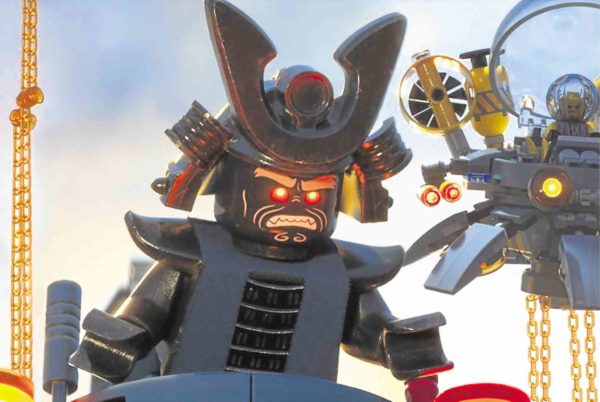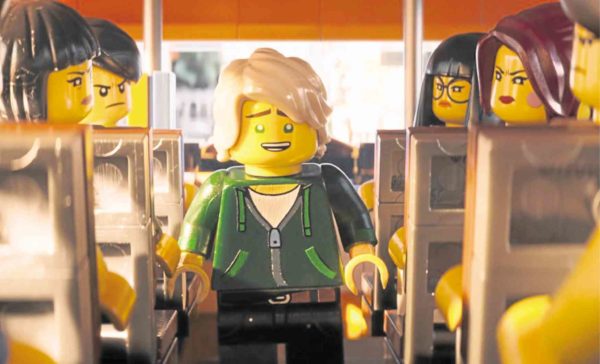Familial fun fizzles in ‘Lego Ninjago’
Daddy issues are worked out via comedic hi-jinks in the visually diverting “The Lego Ninjago Movie,” based on an animated TV show and the popular interlocking toy bricks.
Despite its consistently cute and imaginative visuals, however, the movie’s central father-son conflict ultimately wanes.
The teen hero, Lloyd (voiced by Dave Franco), routinely protects his home city of Ninjago with some schoolmates, against the four-armed villain Garmadon (Justin Theroux)—his biological dad.
Estranged from that despotic father, Lloyd quietly laments growing up without a paternal figure. And, quite desperately, he tries to form a relationship with the self-centered Garmadon on his 16th birthday.
His attempt is ignored, though, as the would-be conqueror is preoccupied with his attack on the city, set for that day. Lloyd and his ninja cohorts—Kai (Michael Peña), Jay (Kumail Nanjiani), Nya (Abbi Jacobson), Zane (Zach Woods) and Cole (Fred Armisen)—naturally show up to save the day. But it’s on another occasion when the father-son adversaries work out the long-unaddressed issues in their normally chaotic lives.
Article continues after this advertisement“The Lego Ninjago Movie,” codirected by Charlie Bean, Bob Logan and Paul Fisher, follows the hits “The Lego Movie” and “The Lego Batman Movie.” It has its distinct charm and quirks, but while it similarly has an accessible story at its core, it is the least consistently entertaining of the three.
Article continues after this advertisementComing off as a spoof of Darth Vader’s story—among other similar tropes in the genre—the Garmadon-Lloyd dynamic starts with proficient banter, is continuously extracted for laughs, but it ultimately fizzles out.
It doesn’t help that cliché-ridden live-action sequences bookend the film—a less-than-enticing storyline features Jackie Chan as a wise, old shopkeeper in America. The actor/martial artist also voices the ninja teens’ mentor, Master Wu, who imparts familiar sage advice. That, at least, amuses from time to time.
This “Ninjago” world is magnificently presented—the colorful city, vehicles and giant robots have designs that mesh Western concepts with Asian aesthetics. It’s easy to love it
to pieces, art-wise. But, it could’ve offered more than
the requisite warm-and-fuzzy messages, and focused instead on a more creatively constructed resolution for its key familial drama.

